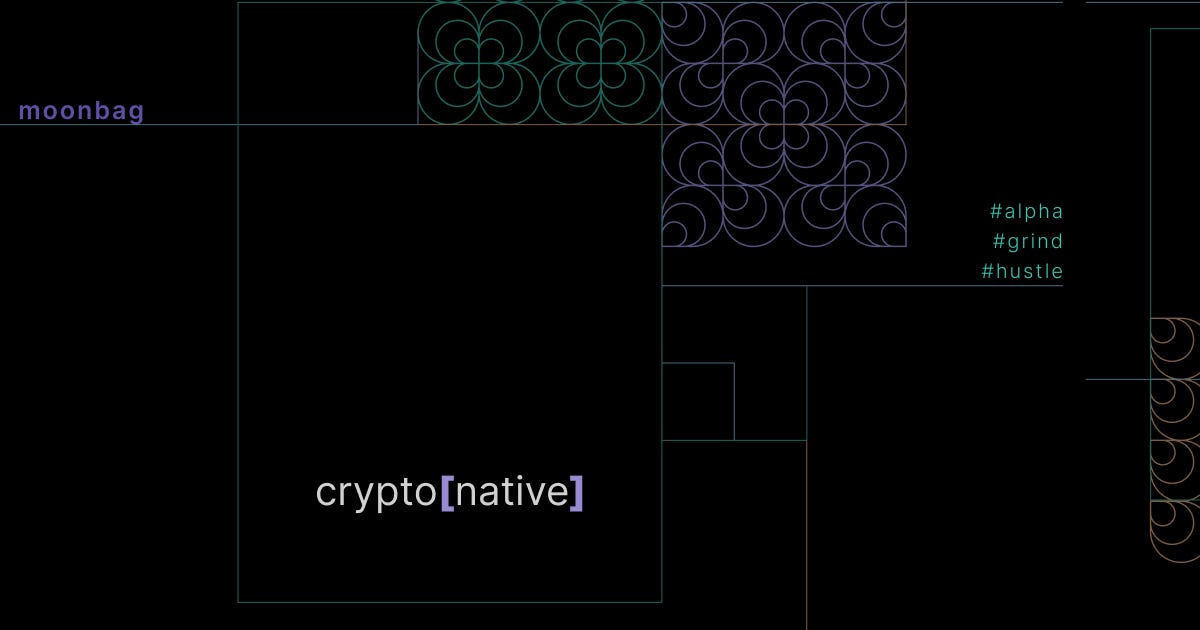Part 3: The Treasury Has Left the Spreadsheet
What happens when public capital gets an interface, and an audience
The Tokenized Treasury: A New Operating System for Public Capital is a four-part series shaped by decades inside early-stage venture, enterprise sales, the digital asset ecosystem, and some of the most disruptive political operations in the country.
It draws from a team that’s scaled VC-backed startups, led enterprise transformations, advised global institutions, and helped architect Web3 infrastructure from treasuries to token design. Just as importantly, it’s backed by an extremely deep bench of political experience, spanning gubernatorial races, national causes, and the digital platforms that powered them before most people knew how online fundraising worked.
This isn’t theory. It’s pattern recognition from people who’ve sat at both the tactical and strategic tables, inside war rooms, boardrooms, and blockchains alike.
What follows in Part 1, Part 2, Part 3, and Part 4 is a blueprint for turning idle public assets into programmable capital, deployed by agents, made transparent, and eventually governed on-chain.
Before someone tries to sell it back to you in a deck, read this.
Web3 is changing the game: are you ready to invest smart? Explore tailored strategies and guidance at Nautilus.Finance. Stay updated in real-time by following Tom Serres on X.com or LinkedIn.
The Public Ledger, Rediscovered
You’ve heard the pitch before, “transparency matters.” It’s a favorite in public finance circles. Everyone says it. Everyone nods. There’s usually a slide deck. Maybe a mission statement. Maybe a quote from the mayor.
And yet, most public institutions still publish PDFs once a quarter, if they’re lucky. Pages of formatting. Rows of numbers. Sometimes 60 days delayed. Sometimes 90. Usually ignored. Buried three clicks deep on a dot-gov domain that hasn’t been updated since the Obama administration.
Transparency, in practice, has become compliance theater. It’s not there to empower anyone. It’s there to check a box, issue a press release, and move on.
But with tokenized assets and agent-based execution now active, something entirely new is on the table, a continuously publishing treasury. A real-time stream of fiscal truth. Not just what was spent last cycle. But what’s being earned, allocated, deployed, and adjusted right now. Not quarterly. Not “upon request.” But live. As in, block by block.
This isn’t just transparency. It’s verifiability baked into the system itself.
Tokenized capital moves through logic-bound rails. Each transaction, each strategy shift, each agent-triggered reallocation, is recorded automatically, timestamped, policy-referenced, and embedded in the public ledger. That doesn’t just make the system open. It makes it auditable by design.
And when that ledger isn’t locked inside a backend database but surfaced through intuitive dashboards, modular displays, and permissioned public interfaces, transparency stops being an afterthought. It becomes a feature. A default. A trust surface.
Just like Bloomberg terminals made capital markets legible to institutional players, these interfaces make public capital legible to everyone else. From treasurers to auditors to everyday residents, performance becomes something you can see, navigate, and understand. Strategies turn into stories. Capital flows become evidence. Yield becomes proof of work.
The treasury isn’t just open. It’s observable. And it’s finally ready to be understood.
Dashboards, Sliders, and Views , How Transparency Becomes Functional
When we say “the public balance sheet is going live,” we don’t mean a spreadsheet uploaded to the city’s website every quarter. We don’t mean a static PDF hidden three clicks deep on a municipal archive page. We mean an interface, a real one, where live capital flows, strategies, and results become visible, legible, and interactable for the people who actually need to engage with them.
This isn’t about publishing more. It’s about publishing smarter.
Not everyone needs the same level of detail. A city treasurer might want full NAV visibility with real-time allocation weights, risk ratios, strategy rotation logs, and execution timestamps. An internal audit team may need access to policy logic, escalation events, and triggered drawdown exits. Meanwhile, the average resident might just want to know, how much yield did we earn this week, and what community priorities did it support?
That’s what functional visibility looks like. It’s not “open data.” It’s layered perception. Context-aware access. Trust by design.
Dashboards become permissioned viewports. Not portals into complexity, but lenses into confidence. Each user sees what’s relevant to their role, from high-level summaries and trendlines to granular agent-level activity. These views aren’t marketing assets or performative releases. They’re operational surfaces. Interfaces designed to keep systems aligned.
And the key to making it all work? Sliders.
Each agent-run treasury has what we call transparency sliders, configurable levers that define what gets published, to whom, and at what cadence. Want citizens to see aggregate performance and surplus yield flows but hide liquidity buffer data? Done. Want board members to receive live alerts when a strategy’s risk threshold is breached or when a vault hits its allocation ceiling? Built-in. Want a public-facing tracker that overlays yield growth with approved civic initiatives, parks, school upgrades, housing credits? That’s not a wishlist item. That’s default behavior.
This isn’t reporting. It’s streaming, in layers.
A governance-grade information layer, designed not to overwhelm, but to orient. Something built to instill confidence, not just deliver data. Because when people can see the machine working, they stop guessing. They stop assuming. They start trusting.
And once the public balance sheet becomes something you can navigate, not just review, you’re not just running a better treasury. You’re broadcasting performance to an audience that, until now, wasn’t even in the room.
Explore More From Crypto Native: Digital Asset Reserves: From Gold to Bitcoin, Making Time Fungible, Liquid Startups: Instant Gratification Tokenized, and Rise of the AI Butler (Who Codes).
The Narrative Layer, Yield as a Public Story
Keep reading with a 7-day free trial
Subscribe to crypto[native] to keep reading this post and get 7 days of free access to the full post archives.
![crypto[native]](https://substackcdn.com/image/fetch/$s_!baju!,w_80,h_80,c_fill,f_auto,q_auto:good,fl_progressive:steep,g_auto/https%3A%2F%2Fsubstack-post-media.s3.amazonaws.com%2Fpublic%2Fimages%2Fc94827b0-d403-4ff4-a1dc-b507623bbbd2_1000x1000.png)

![crypto[native]](https://substackcdn.com/image/fetch/$s_!baju!,w_36,h_36,c_fill,f_auto,q_auto:good,fl_progressive:steep,g_auto/https%3A%2F%2Fsubstack-post-media.s3.amazonaws.com%2Fpublic%2Fimages%2Fc94827b0-d403-4ff4-a1dc-b507623bbbd2_1000x1000.png)

